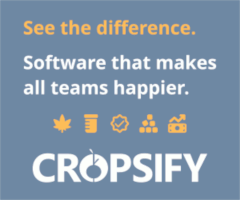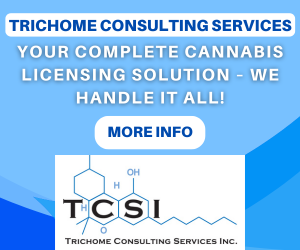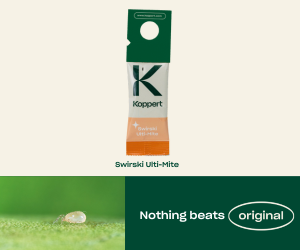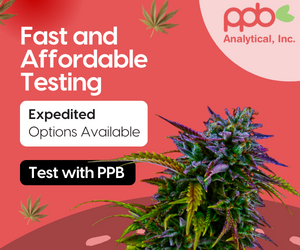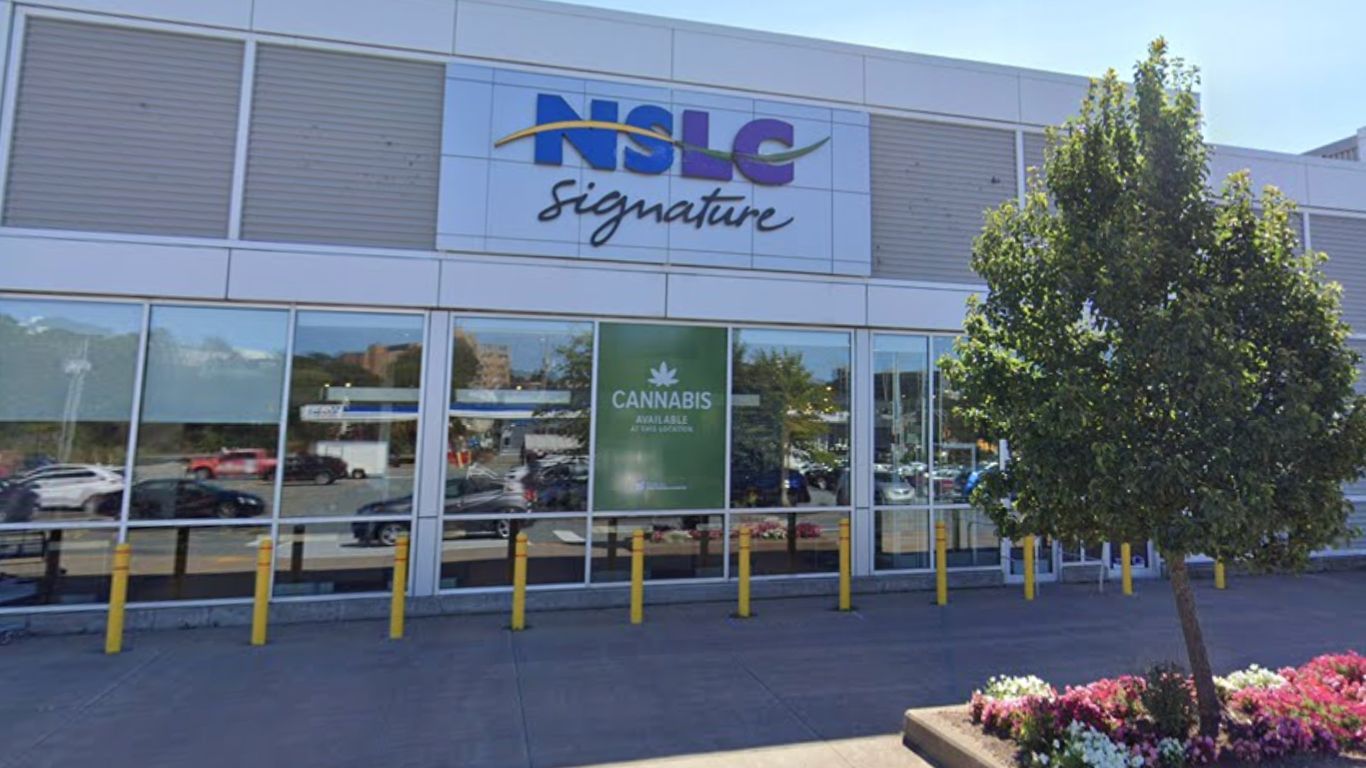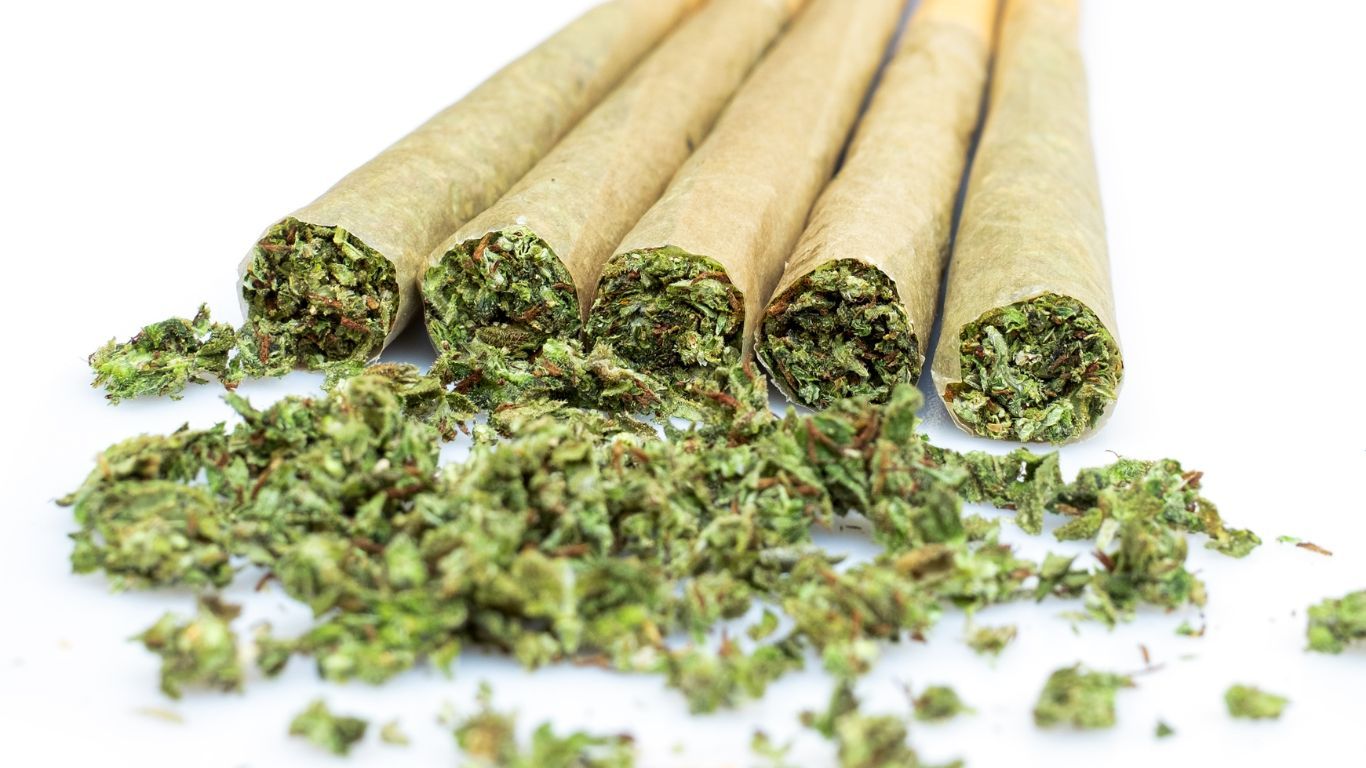
The Cannabis Act attempted to take decades of global cannabis innovation and distil it into a few manageable categories that ensure Canadians remain safe and people roughly know what they are buying.
After a year of the Act in play, regulators felt confident enough to bring edibles and beverages into the fray, ‘Cannabis 2.0.’ The delay wasn’t unfounded: cannabis edibles are a tricky beast to tame, primarily because they’re so difficult to define.
It was decided that the ‘defining feature’ of a cannabis edible was that it is consumed “as food”. This directive is delightfully vague in its precision, in that anything that is not consumed as food is therefore not an edible.
“The use of plant-based fibres in sugar-free products has been a widespread and common practice for decades. While our extract lozenge formulation is, in fact, very simple, this industry is all about execution.”
Ilya Serebryany, Founder and CEO of Loosh Brands
Non-food innovation in cannabis non-edibles
The legacy market had primed consumers for larger-dosed edibles (even if those doses didn’t live up to the label), and lobbying groups like the Cannabis Council of Canada have made the reconsideration of potency limits on edibles a core mandate of their efforts to reform the industry to tackle illicit trade.
Organigram saw this as an opportunity to side-step a glaring issue in current regulations: 10mg THC caps on packages of edibles. The workaround is simply to produce an edible that is not consumed “as food”—hence the naming conventions of lozenges, sublinguals, etc. And their Edison Jolts were born. 10mg THC each with 10 lozenges in a package, for a total of 100mg THC.
Organigram declined to provide comment on this topic, but Kate Hillyar, Senior Manager of Corporate Communications at Aurora, commented that they “…develop innovative products while staying within the federal regulatory framework. We developed Glitches based on an insight that consumers wanted an ingestible extract that was an alternative to cannabis capsules but still provided a convenient, discreet format with a desirable taste.”
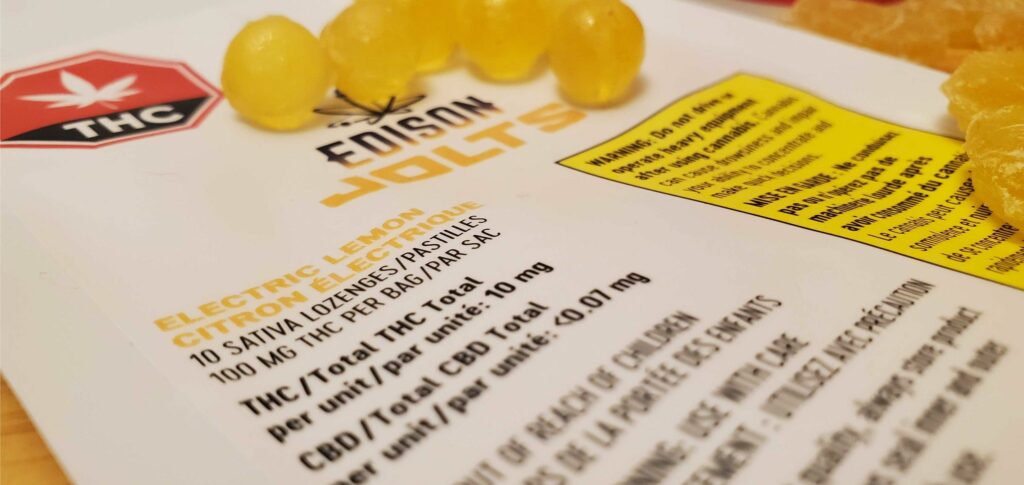
Glitches from Aurora’s brand Drift are perhaps the most interesting example of ‘non-edibles.’ They purport to replace capsules while providing a palatable flavour and a satisfying chew. However, like Flintstones Chewable Gummy Vitamins, they are not food.
In a response to questions about products like Aurora’s Glitches, a representative for Health Canada told StratCann that the agency is “aware of the product and is looking into this situation.”
This ‘not an edible’ nonetheless requires a category in which it can be approved, sorted, and sold. Like infused pre-rolls, the last concept to break the notion of category, the realm of ‘extract’ lay as a clear destination.
If ‘extracts’ can have milled flower, concentrates, paper, and terps (like infused pre-rolls), the tolerance for ‘additives’ appears to be the most forgiving.
Some forest-hardened potheads will go so far as to say that you can eat extracts straight from the jar, efficiency and palatability be damned for the purest high.
Andrea Dobbs, Co-founder of the Village Bloomery, a retailer in Vancouver, told StratCann that so far, “[edible extracts] are very well received. Good value and a happy medium between capsules and gummies. The [Kinslips, from California] took a minute to catch on, but they’re all caught up now. The edible extract marries value with candy. Folks dead set on value will go capsule, but many are looking to have a yummy infused treat.”
The edible extract “Loophole”?
Ironically, few things define the current state of the edible selection in Canada more clearly than a pervasive ingredient: sugar. It also happens to be one of the few additives that explicitly aren’t allowed in cannabis extracts:
101.3 (1) A cannabis extract…must not contain any ingredients other than
(a) carrier substances;
(b) flavouring agents; and
(c) substances that are necessary to maintain the quality or stability of the cannabis product.
(2) The following substances must not be used as ingredients to produce a cannabis extract referred to in subsection (1):
(b) sugars or sweeteners or sweetening agents, as those terms are defined in subsection B.01.001(1) of the Food and Drug Regulations.
This section of the Cannabis Regulations can be affectionately referred to by some as ‘the loophole.’
Section (1) defines the ground rules for vape cartridges and any extract that needs something extra to reach its full potential. Section (2) puts some guardrails in the category that ensure your ‘honey oil’ isn’t just oily honey (because lungs don’t appreciate sugar).
All this comes together to mean that if you combine cannabinoids with carriers, flavours and stabilizing agents—as long as they’re not sugars or a few other banned substances—you can legally call your product an extract, with the excise tax and THC limit implications, as long as it is not consumed as food.
Cass Whichelo, Order Manager at an independent retail store in Ontario, told StratCann that, “nobody asks for them unless they’ve had them before. If they have questions, I point to our peppermint CBD oil and Blue Raspberry THC oil—the same thing that allows [them to be legal] allows Jolts.”
The current solutions and the implications
Hillier from Aurora explains, “Using oligofructose, a dietary fibre that maintains the quality and stability of the THC, our team was able to create a unique formulation for a chewable extract product, while staying within the regulatory requirements for THC levels and ingredients.”
Organigram submitted a patent in 2021, “Buccal Dosage Forms Comprising Oligosaccharides,” that is currently pending. They were the first to discover that oligofructose can be legally used in cannabis extracts and provide a versatile foundation for building these extracts. The Edison Jolts from Organigram, Lozenges from Loosh Brands’ A-ha!, and Drift Glitches from Aurora, use oligofructose as a scaffold for their cannabinoids and other ingredients.
All you need to know about this sweet-tasting oligosaccharide (from the Greek for ‘a few sugars’) is that it is not considered a sugar or sweetener in Canada while boasting 30% to 50% of the perceptible sweetness of standard sucrose. Biologically speaking, it is closer to dietary fibres like inulin.
Like fibre, it is not broken down by digestion and has few calories. It can contribute to gut health, but large amounts may also cause abdominal discomfort, gas, or cramping.
Ilya Serebryany, Founder and CEO of Loosh Brands, a privately held Toronto-based LP specializing in edible and ingestible cannabis products, told StratCann that “the use of plant-based fibres in sugar-free products has been a widespread and common practice for decades. While our extract lozenge formulation is, in fact, very simple, this industry is all about execution.”
The implications
The most obvious implication of current edible extracts is the different rules concerning excise tax and caps on allowable THC. Those who took the ‘traditional edible’ route, replete with sugar and ingredients often considered to be food, are rightly feeling a little snubbed by what could be considered a loophole.
Dobbs, the Vancouver cannabis retailer, continues by saying, “they actually translate as a value offering. You can buy a pack of 2 chews totalling $9 after tax, a bottle of 30 10mg capsules for $40 after tax, or a 10-pack of 10mg lozenges for around $20.”
Serebryany of Loosh Brands adds that “it is exorbitantly costly and wasteful to package 2-5 bite-sized pieces of an edible product in a child-proof pouch or container. Imagine one could only purchase tiny airplane-sized bottles of alcohol. This is the case for edibles and this embarrassing situation should be remedied as soon as possible.”
However, the grumblings of traditional edible manufacturers may soon turn to signs of interest. Those same edible craftsmen may need to simply ditch the sweeteners—a request more frequent from health-conscious consumers—to render their edible ‘edible’ a simple extract that can be consumed sublingually.
“The customer loves it. They are completely aware of the 10mg limit, so when they see 250mg they’ll buy it with a smile and no hesitation.”
Jen, a keyholder at an independent retail chain in Ontario
Jen, a keyholder at an independent retail chain in Ontario, explained, referring to the new Indiva Life products, “the customers love it. Like ‘Wow, 250mg, I’ll take that.’ They are completely aware of the 10mg limit, so when they see 250mg they’ll buy it with a smile and no hesitation.” However, in discussing any support she receives, she mentioned that she had, “yet to get any educational tools for these, I just know how to explain it because of my own research and experiences.”
In the midst of a review of the Cannabis Act as a whole, and in the context of a report-based compliance system, these ingestible extracts are unlikely to disappear any time soon. However, there remains the ticking clock of Organigram’s patent which, once approved, is likely to begin a flurry of litigation and/or licensing deals.
Serebryany, CEO of Loosh Brands, resolutely states that “we are proud of our successes in launching an impressive portfolio of highly differentiated ingestible cannabis products in our first year of commercial operations. Should regulations evolve to further limit or permit the availability of these or other products, we will tailor our offerings accordingly.”
– Roderick S. MacDonald. Rod is a freelance writer and communications consultant focused on the cannabis industry, legal and medical psychedelic therapies, and longevity through genetic and molecular engineering. After a decade in the lab researching cancer and ageing, he learned French in southern Quebec before landing in Belgium. He currently resides in London, Ontario.






